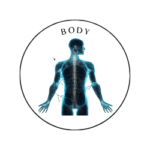 Mind
Mind
- Digital and Modern Well-being
- Mental Health and Emotional Well-being
- Mind-Body Connection and Holistic Health
- Parenting and Family
- Personal Growth and Development
- Relationships and Social Well-being
- Stress and Relaxation
- Therapeutic and Creative Practices
- Trauma and Recovery
- Work, Productivity, and Discipline
 Body
Body
 Fitness
Fitness
 Food
Food
 Beauty
Beauty
Oral Hygiene Tips for a Bright and Healthy Smile

Oral Hygiene Tips for a Bright and Healthy Smile
Maintaining good oral hygiene is essential not only for a bright smile but also for overall health. Your mouth is the gateway to your body, and poor dental hygiene can lead to serious health problems such as gum disease, cavities, and even cardiovascular issues. A consistent oral care routine helps to prevent these issues while giving you the confidence that comes with a clean and healthy smile.
In this guide, we’ll explore the best tips and practices for keeping your teeth and gums in optimal condition.
Why Oral Hygiene Matters
Good oral hygiene is more than just preventing bad breath or keeping your teeth white. It’s crucial for avoiding dental problems like:
- Tooth decay and cavities
- Gum disease (gingivitis and periodontitis)
- Tooth loss
- Oral infections and sores
- Bad breath (halitosis)
Moreover, research shows a link between poor oral hygiene and serious conditions like heart disease, diabetes, and respiratory problems. Keeping your mouth healthy can contribute to your overall well-being.
Daily Oral Hygiene Routine: The Foundation of a Healthy Smile
Following a regular routine is key to maintaining oral hygiene. Here’s a step-by-step guide to what you should do daily to ensure a healthy smile.
1. Brush Twice a Day for Two Minutes
Why it’s important: Brushing removes plaque, the sticky film of bacteria that can lead to tooth decay and gum disease if left unchecked.
How to brush correctly: Use a soft-bristled toothbrush and fluoride toothpaste. Place the brush at a 45-degree angle to your gums and use gentle, circular motions to clean the outer, inner, and chewing surfaces of your teeth. Make sure to spend at least two minutes brushing.
Pro tip: Replace your toothbrush every three to four months, or sooner if the bristles become frayed. Electric toothbrushes with timers can also help you maintain proper brushing habits.
2. Floss Daily
Why it’s important: Brushing alone can’t reach the tight spaces between your teeth. Flossing removes food particles and plaque from these areas, reducing the risk of cavities and gum disease.
How to floss correctly: Use about 18 inches of floss, winding most of it around your middle fingers. Gently slide the floss between your teeth and curve it into a “C” shape to follow the contour of each tooth. Make sure to clean both sides of each tooth, going beneath the gum line without snapping or forcing the floss.
Pro tip: If you have difficulty using traditional floss, try floss picks or a water flosser to clean between your teeth effectively.
3. Use Mouthwash for Extra Protection
Why it’s important: Mouthwash helps to clean areas that brushing and flossing might miss, freshens your breath, and can deliver additional fluoride or antibacterial benefits, depending on the formula.
- How to use mouthwash: Choose a mouthwash that meets your specific needs—whether it’s for fresh breath, plaque control, or fluoride reinforcement. Swish for 30 seconds to a minute after brushing and flossing. Avoid eating or drinking for 30 minutes after using fluoride mouthwash.
4. Clean Your Tongue
Why it’s important: Bacteria can accumulate on your tongue, contributing to bad breath and affecting oral hygiene.
- How to clean your tongue: You can use a toothbrush or a tongue scraper to gently clean your tongue. Start at the back of your tongue and move forward to remove bacteria and debris.
5. Drink Plenty of Water
Why it’s important: Water helps wash away food particles and bacteria, keeps your mouth hydrated, and stimulates saliva production, which is your mouth’s natural defense against cavities.
- How to stay hydrated: Drink water throughout the day, especially after eating, to help flush out food particles and reduce the acid levels in your mouth. Avoid sugary drinks like soda and fruit juice, which can contribute to tooth decay.
Tips for a Brighter, Whiter Smile
While maintaining a consistent oral hygiene routine is essential for dental health, many people also want a smile that’s bright and white. Here are some tips for keeping your teeth looking their best:
1. Limit Staining Foods and Drinks
Certain foods and drinks can stain your teeth over time. These include:
- Coffee and tea
- Red wine
- Dark berries
- Tomato-based sauces
- Cola
If you do consume these, try to rinse your mouth with water afterward or drink through a straw to minimise contact with your teeth.
2. Quit Smoking
Smoking not only stains your teeth, but it also increases the risk of gum disease and oral cancer. Quitting smoking can vastly improve the appearance of your teeth and the overall health of your mouth.
3. Use Whitening Toothpaste
Whitening toothpaste can help remove surface stains on your teeth and maintain brightness. However, be careful not to overuse whitening products, as excessive use can wear down your tooth enamel.
4. Consider Professional Whitening Treatments
If you want to go a step further, talk to your dentist about professional teeth whitening options. In-office whitening treatments can deliver faster, more noticeable results compared to over-the-counter products.
How to Keep Your Gums Healthy
Healthy gums are the foundation of a healthy smile. Here’s how to ensure your gums stay in great condition:
Brush along the gum line: When brushing, make sure to clean along the gum line, where plaque tends to build up. Gently angle your toothbrush to reach this area without causing irritation.
Floss regularly: As mentioned earlier, flossing is crucial for removing plaque and food particles from between your teeth and along the gum line.
Look for signs of gum disease: Early signs of gum disease include redness, swelling, and bleeding gums when brushing or flossing. If you notice these symptoms, visit your dentist to prevent the condition from worsening.
Use an antibacterial mouthwash: An antibacterial mouthwash can help reduce the bacteria that cause gum disease, keeping your gums healthy and strong.
Visit Your Dentist Regularly
Even with a stellar oral hygiene routine, it’s important to visit your dentist regularly—typically every six months—for a professional cleaning and checkup. Dental professionals can spot issues like cavities or gum disease before they become serious problems. Regular cleanings also help remove tartar (hardened plaque) that can’t be removed by brushing or flossing alone.
Conclusion
Maintaining a bright, healthy smile is simple when you commit to a daily oral hygiene routine. By brushing, flossing, using mouthwash, and staying hydrated, you’ll not only keep your teeth and gums in top condition but also reduce your risk of dental issues. Coupled with regular dental checkups and mindful habits, these steps will ensure your smile stays healthy and radiant for years to come.
